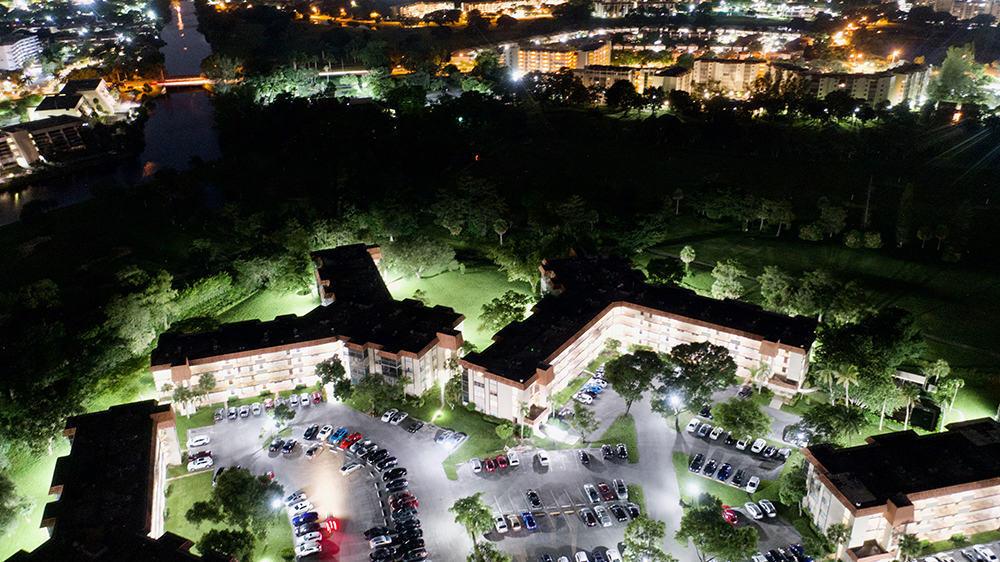This website uses cookies so that we can provide you with the best user experience possible. Cookie information is stored in your browser and performs functions such as recognising you when you return to our website and helping our team to understand which sections of the website you find most interesting and useful.

Lauren Dandridge, a lighting industry veteran, principle of the lighting design firm Chromatic, and professor of architectural lighting design at the University of Southern California, recently hosted a webinar in partnership with the DLC that explored the concept of equity in lighting outdoor spaces at night. Alongside panelists Don Slater of the London School of Economics, Robert Williams of Bennett College, and R. Joshua Scannell of The New School, the webinar candidly explored the ways in which outdoor lighting has been used to perpetuate systemic and racial inequities in underrepresented communities, and how the lighting industry can emphasize equity and equal representation moving forward. We look forward to continuing this important conversation.
There were a few recurring themes interspersed throughout the DLC’s December 9th Responsible Lighting at Night: Bridging the Inequality Gap webinar that highlighted the way in which outdoor lighting has been – and still is – used for control and surveillance of public spaces and undermines the health and wellbeing of marginalized communities.
Lauren Dandridge of the University of Southern California moderated the webinar’s expert panel of scholars, which included Don Slater of the London School of Economics, Robert Williams of Bennett College, and R. Joshua Scannell of The New School. The collective group explored how the technical and aesthetic considerations that go into lighting outdoor environments often miss, or dismiss, the social implications inherent in lighting design for public spaces.
To frame the conversation, Scannell pointed to the United States’ historical relationship with nighttime lighting, an attitude which continues to permeate the landscape today. During Colonial times, he said, “Black and Native people who were outside at night had to carry or wear lanterns. The idea behind that was that was if Black and Native people could gather unseen, they would organize insurrections and colonial administrators needed to keep watch.”
“History matters,” said Williams. “It’s not something that is dead and gone, but rather…it sets in motion things that then persist over time.”
Dandridge, a 17-year veteran in the lighting industry and principle of a lighting design firm that promotes lighting quality and equality for all communities, called lighting “a tool by which those in power wield a type of control, and a basic utility of modern life that has been leveraged as a quiet negligence by those who would maintain a status quo”. Decades of systemically treating nighttime illumination in this way has “led communities of color to be underserved and over-surveilled,” she said.
The panel devoted significant time to discussing a DeBlasio-era New York City program pitched as a crime-fighting tactic in public housing developments. Panelists highlighted the program as an example of how municipalities use economic solutions, such as over-lighting, to treat symptoms of problems rather than seeking and applying research necessary to understand and address root causes of crime. In discussing the NY “Omnipresence” program, panelists noted the absence of an emphasis on lighting design – and instead a reliance on over-lighting – gave the appearance of “doing something” without regard to the systemic factors contributing to the development of specific environments around public housing or the community living within the environment.
“There is a long-standing, known tendency for cities and power brokers to define what crimes matter…resulting in the criminalizing of certain types of spaces and populations,” Scannell said.
Essentially, the panel noted, governments choose to single out particular crimes in particular communities and address them with lighting “solutions” that don’t have the benefit of either adequate research or input from 1) community residents or 2) lighting professionals.
The panel maintained that focusing on lighting design that’s founded in research and community input, rather than misplaced assumptions and fears about particular communities, is the right path forward.
“Integrating sociological and historical context in our practices of lighting design offers the potential to engage more meaningfully with the communities we serve, taking into account the ways light may be used and misused to empower or control,” Dandridge said.
Summing up the webinar’s key points, Dandridge pointed out that the December 9th discussion was “only the beginning,” and emphasized the importance of supporting documentation and industry-wide acknowledgement of the problem. By continuing this dialogue throughout 2022, “we can identify the right places to go next and illuminate pathways forward”.
© 2023 DesignLights Consortium. The DesignLights Consortium is a project of Efficiency Forward, Inc., a non-profit 501(c)3 organization. Privacy Policy Terms of Use
